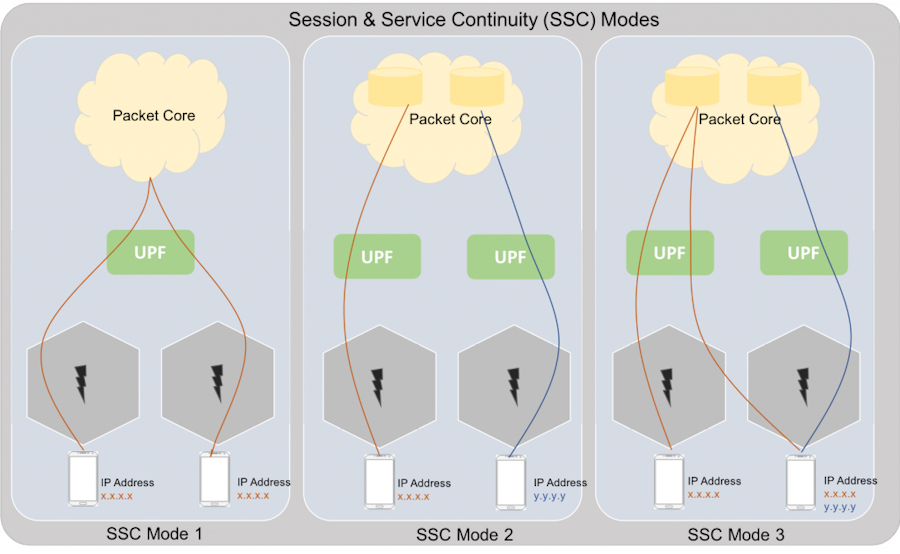4G5GWorld has a new home now. Visit TelecomGrid for new stories and blogs!
Session and Service Continuity Evolution in 5G Networks
The explosive growth of data-driven service has been the main driver for 3GPP evolutions in recent years. 5G is expected to provide considerably more flexibility for customization compared to earlier generations. New deployments are expected to serve huge amounts of mobile data traffic, thus requiring very efficient user plane path management.
One of the key features of data service is session and service continuity. It ensures uninterrupted service experience to the user regardless whether there is any change of UE (User Equipment) IP address or change in the core network anchor point.
4G LTE evolved packet system provides continuity of IP session by maintaining P-GW and UE's PDU session IP address regardless of UE mobility events. However, not all applications require guaranteed IP session continuity even if service continuity is needed. The 5G network provides more flexibility with another evolution by offering different types of session continuity depending on UE or service type.
To addresses various continuity requirements of different applications/services, 5G System architecture provides three Session and Service Continuity (SSC) modes. Once an SSC mode is associated with a PDU Session then it does not change during the lifetime of the PDU Session. The 5G architecture allows applications to influence the selection of SSC modes as needed for required data service.

SSC mode determines how User Plan Function (UPF) of PDU session is allocated and managed during session lifetime. It anchors IP address similar to P-GW in LTE evolved packet core network.
SSC mode 1 is a traditional one and provides stable network connectivity to UE and preserves IP anchor (IPv4 or IPv6) for PDU session. IP continuity is maintained irrespective of UE movements. PDU session anchor UPF is maintained throughout session lifetime regardless of UE mobility.
With SSC mode 2, a network may break the connectivity and release mapped PDU session before making a new one. In this case, the network may release UE's IP address. If a new PDU session is established, then a new anchor UPF can be chosen for this session.
With SSC mode 3, network ensures that UE does not lose connectivity by making a new connection before breaking the existing one to allow service continuity. In this mode UE, IP address is not preserved as PDU session anchor changes. The network may select a PDU Session Anchor UPF depending on UE's new condition. One of the main benefits of this mode is to have the flexibility to select another UPF based on UE's new condition for the newly created session whereas still maintaining existing sessions via earlier UPF.
Service continuity mode for an application is determined by SSC mode selection policy. The service provider may provision the policy rules for UE to determine the type of mode associated with an application or a group of applications. There can be a default policy that matches all applications on UE. An application does not decide SSC mode when it initiates a session instead UE determines the SSC mode for the application by checking SSC mode selection policy.
If UE provides SSC mode while requesting new PDU session creation, then Session Management Function (SMF) in the network either accepts or modifies or rejects based on UE subscription or local configuration. If UE does not provide SSC, then SMF selects default SCC depending on the data network in subscription or local configuration.




